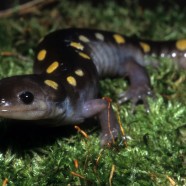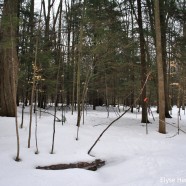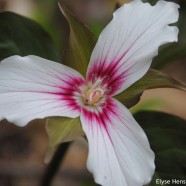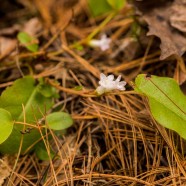Could Tonight be the Night?!
Tonight’s conditions are looking promising for amphibian migrations to begin as overnight temperatures will be above 40°F and rain is on it’s way. While humans don’t like to be out much during rainy nights, salamanders and frogs use these evenings to migrate in mass to their vernal breeding pools. With that said, be on the lookout for these special species whether you are hiking or driving and give them plenty of space as they make their way from their wooded hiding places to their watery breeding grounds.
Read MoreVernal Pools Poking Through
Last weekend as we were out surveying for HWA in Dobbin’s Woods, a beautiful Chautauqua Watershed Conservancy property, we came across several little pools beginning to form in the depressions of the landscape as the snow increasingly melts back. While these pools aren’t too attractive for us to throw our beach chair next to, they are extremely important to a number of amphibian species. In the upcoming weeks these small pools will serve as little nurseries for salamander and frog offspring to safely develop from egg-y masses to free swimming larvae to land conquering tetrapods....
Read MorePlants are Poppin’!
With the recent warmer weather, a number of different species have made it apparent that spring is here for good. The neotropical migrants have been moving through the area while a number of woody and herbaceous plants are finally beginning to flower and leaf out. The past couple of days we have taken advantage of the nice weather and gotten out to begin surveying research sites with SUNY JCC interns, and surveying Atlas sites for its digital revision. Below are a few plants that we have seen popping out in our survey sites, can you tell what they are? Let’s see if you got them all....
Read MoreTrailing Arbutus (Epigaea repens) by Twan Leenders
It is easy to miss the subtle beauty of Trailing Arbutus (Epigaea repens) in the increasingly exuberant outbursts of spring ephemerals. This once common species seems to be disappearing from much of its former range. We are happy that we can find a persistent patch of these underappreciated flowers right outside our building still – hope you can still enjoy them too!
Read More







